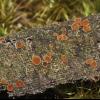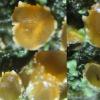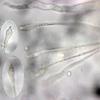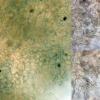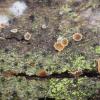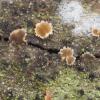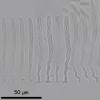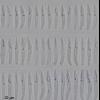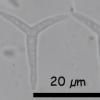
21-12-2025 09:32
Hello.A tiny ascomycete found embedded in wood in

21-12-2025 21:32
Pol DebaenstHello, Garden, Burgweg 19, Veurne, BelgiumOn 10/1

22-12-2025 23:38
Patrice TANCHAUDBonsoir, rÃĐcolte sur un mur en pierre, apothÃĐci

22-12-2025 00:47
Patrice TANCHAUDBonsoir, rÃĐcolte à proximitÃĐ du milieu dunaire

21-12-2025 21:40
Isabelle CharissouBonjour, j'aimerais connaitre les rÃĐfÃĐrences de

20-12-2025 23:08
Patrice TANCHAUDBonsoir, rÃĐcolte sur sol sablonneux dans l'arriÃ
A vewr que os parece
Saludos
Joseba



Thanks.


Recolectos Miguel Angel Delgado
 Fecha de la reclecta  27/10/2019
courdenadas 42.478222 -8.882649
Ogrove Pontevedra EspaÃąa
Saludos
Joseba

My spores are 16x2,2 microns. Perhaps tomorrow I could send more accuracy measurements.Â
Portugal, Sabugal, Quercus pyrenaica forest with Salix, Castanea sativa and more, on Salix bark with another orange-red Orbilia not studied yet, 40°21'18.4"N, 7°02'01.9"W, 925 m., leg. Miguel Ã. Ribes.
Thanks a lot.


Tomorrow I will send you some pictures too.
Miguel Ãngel

Here are some measurements and pictures:
Spores (1000x, H2O, live)
(13,8) 14 - 18,3 (19,1) Ã (2) 2,2 - 2,5 (2,8) Âĩm
Q = (4,9) 6,1 - 7,9 (8,4) ; N = 45
Me = 16,2 Ã 2,3 Âĩm ; Qe = 7
Asci (1000x, H2O, live + died)
(79,7) 80,2 - 104,7 (118,9) Ã (4,9) 5 - 6,1 (6,6) Âĩm
N = 17; Me = 93,1 Ã 5,7 Âĩm
Conidiospores?? (1000x, H2O, live)
23,1 - 28,46 (28,5) Ã (18,5) 18,53 - 20 Âĩm
N = 5;Â Me = 24,5 Ã 19,6 Âĩm
Asci have the first fourth spores not inverted and the second fourth spores inverted.
I saw "in situ", at Portugal, a sample plenty of "conidiospores??", but I hadn't my camera. Days later, at home, I have only find some of them.
Miguel Ãngel



I have not study yet the other Orbilia, I will send it here.
Thanks.
